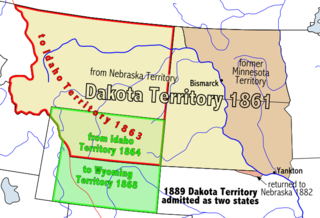 W
WRupert's Land, or Prince Rupert's Land, was a territory in British North America comprising the Hudson Bay drainage basin, a territory in which a commercial monopoly was operated by the Hudson's Bay Company for 200 years from 1670 to 1870. The area once known as Rupert's Land is now mainly a part of Canada, but a small portion is now in the United States. It was named after Prince Rupert of the Rhine, a nephew of Charles I and the first Governor of the Hudson's Bay Company (HBC). In December 1821, the HBC monopoly was extended from Rupert's Land to the Pacific coast.
 W
WThe Rupert's Land Act 1868 was an Act of the Parliament of the United Kingdom of Great Britain and Ireland, authorizing the transfer of Rupert's Land from the control of the Hudson's Bay Company to the Dominion of Canada. Often confused with the Deed of Surrender, the Act is different as it only expressed that the United Kingdom and Canada permitted the transfer but did not settle on the details of exchange with HBC which were outline in the Deed.
 W
WThe Athabasca Landing Trail was a long-distance portage route that linked Fort Edmonton on the North Saskatchewan River with Athabasca Landing on the Athabasca River. The distance of the trail between Fort Edmonton and Athabasca Landing was 100 miles, giving the trail the nickname "The 100 Mile Portage."
 W
WFort Victoria, near present-day Smoky Lake, Alberta, was established by the Hudson's Bay Company in 1864 on the North Saskatchewan River as a trading post with the local Cree First Nations. Today, it is a historical museum known as Victoria Settlement.
 W
WThe Pembina Region, also referred to as the Pembina District and Pembina Department, is the historic name of an unorganized territory of land that was ceded to the United States. The area included parts of what became North Dakota and a portion of central eastern to northeastern South Dakota. The eastern boundary was the Red River and included the Pembina River area. The region was formerly part of British Rupert's Land and the Red River Colony, that encompassed an area then known as the Assiniboia District, from 1763 to the signing of the Treaty of 1818. The treaty transferred the region that was south of the 49th parallel from the British to the United States.
 W
WPrince Rupert of the Rhine, Duke of Cumberland, was a German-English army officer, admiral, scientist and colonial governor. He first came to prominence as a Royalist cavalry commander during the English Civil War. Rupert was the third son of the German prince Frederick V of the Palatinate and Elizabeth, eldest daughter of James VI of Scotland and I of England.
 W
WThis page is meant to provide clarity on the mechanisms and timeline of the transfer of Rupert's Land and North-Western Territory from the Hudson's Bay Company (HBC) back to the Crown and then immediately to the new nation of Canada.